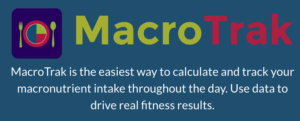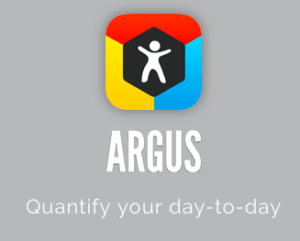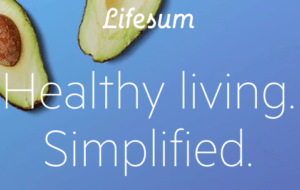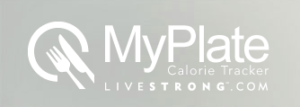I noticed that in the past I have not been good about tracking what goes in my mouth. Last year as I was dropping 10kg, I focused more on the “When” things went in for the year. I also gestimated “a little bit less” for each meal.
At the start of this year I wanted to be more intentional about what goes into my body.
Why is it important to track what goes into the body?
There are a few reasons why being aware of what goes in the body is important.
- Abs are made in the kitchen not the gym. There is a phrase along those lines floating around. I think it is true.
Correction: I was told this statement might be misleading. Abs are built in the gym. They are a muscle like anything else. However, they will reveal themselves based on what you do in the kitchen.
- Getting the right nutrients into your body is important for maintaining your energy throughout the day. If you don’t have the right nutrients, your productivity will suffer.
- It helps you become aware of how certain foods impact your performance. Like eating that Turkey sandwich before you write a blog post = snoozeville.
There are probably more reasons, but those are what I can think of at the moment.
What have I learned so far about tracking meals?
I was recently introduced to the term, macronutrients.
What are macronutrients?
Macronutrients are the three big categories of substance that make up food. They are Proteins, Carbs and Fat. Those three words are used all the time in grocery stores. “High in Protein”
“Low Fat”
“Low Carb”
I’m sure you’ve seen some of these things as well. Basically, it is a good place to start to become more aware of what goes in your body. You’ll be able to answer questions like:
Am I getting enough protein to maintain my current muscle mass?
Am I eating too many carbs?
Should I eat everything that is low fat?
Fat can be good for you.
One thing that surprised me is how good fat can be for the body. When I was growing up, there was a huge emphasis on low fat foods. Everything had it on the label. However, my reading has taught me that there are good fats and bad fats. Many of the good fats are important for keeping your body healthy.
Like eggs. Eggs has a lot of fat in the yolk, but that yolk is full of good stuff for the body. A lot of the good fats help coat the organs and keep your system flowing. Some forms of fats will help clear bad cholestorol out of your arteries.
Not all carbs are equal
Atkins and Ketogenic diets propose a low or no carb meal plan. This is great for increasing your protein intake. It’s also good for losing water weight. I would be reluctant to tell someone not to take in any carbs at all.
Why?
Well, many greens contain the nutrients that we can’t find in other non-carb foods. So rather than taking a no-carb approach, it’s probably best to stick with a low carb plan. I’ve learned a few tips that might help:
- Eat vegetables that grow above ground. Anything that grows below ground are much higher in carb and calories.
- Avoid anything white or that could be white. I learned this tip whil reading Tim Ferriss’ book, “Four Hour Body.” That would include white potatoes, radishes, rice, bread, etc. Although, I have made one exception. Cauliflower.
- Some carbs are usable while other are not useable. Usable carbs will go from the stomach into the body and be used for energy, or fat if they aren’t used. Unusable carbs are like fiber. They go through our digestive track and keep the poo-poo coming out smooth. Don’t’ for get to have enough fiber when your planning your meals.
You’re probably not eating enough protein.
I learned how to calculate the amount of protein I should be eating to maintain muscle mass. 2.75 x Lean Body Mass in KG
When I did the calculation, I learned that I need to injest about 184 grams of protein per day. Geez! I wasn’t getting enough. That’s like eating 7 chicken breasts each day to meet the requirement. Of course, some other foods also have protein as well. I personally like spinach, nuts and beans.
Changing your attitune about food
First step is always to be aware. Be aware of where you are now. How much are you eating?
If you don’t know, start keeping a food diary for one week. Track the foods and snacks that go into your body. You don’t necessarily have to begin tracking grams, calories and macros. Getting started with tracking is a good first step.
I started by creating a notebook in evernote and called it my food diary. I just wrote down the food that I ate throughout the day for five days. At the end of the week I went back to see how much I was eating.
Are there any apps that can help me track my food?
There are a number of apps out there that can help you with being more aware of your food intake.
I spent the last 2 weeks testing out four apps to see which one I like using best. Argus, Lifesum, MyPlate and MyFitnessPal, Macrotrack
Macrotrack

The simplest app I have tried. It focuses only on calories and macros. There are no extras.
Who is it good for?
Good for the person who knows how to do their own calculations and wants to keep things super simple. If you eat the same foods on most days, this app can be very useful.
Any downsides?
The downside is that you have to build your own database for this app. You will have to manually add the foods and macronutrients for each one. This can get a bit annoying when you change your meals or don’t know the numbers for a food.
Argus

http://www.azumio.com/s/argus/index.html
Argus has a fun scrolling layout. It does more than track foods. This app will give you a visual display of calories burned, daily steps, heart rate and meals. The meal tracker is connected to a database with tons of food listed. You’ll be able to find what your eating or something close enough to estimate your meals quickly. It also has a label scanner to add your grocery store foods easily.
Who is it good for?
Argus is good for the person that wants to track many things at once and likes having some guidance. The app provides meal plan and recipe recommendations based on what you are trying to achieve. This can take a lot of the guesswork out of deciding on your meals and what to cook.
Any downsides?
Having so many extras added to the app made the experience a little too busy for me. It took a few steps to get into the meal tracker. I didn’t like that.
Lifesum

This app has a funny, apple-looking character on your diary dashboard. This is a reminder to enter your daily weight. The interface is clean at the top and breaks down how many calories and macros you have left to consume each day.
This app also includes a food database and bar code scanner.
Who is it good for?
Good for the person that likes cartoonish, graphical interface. It feels friendly. The premium upgrade offers more content and tracking features.
Any downsides?
The free version doesn’t let you set any goals for your macronutrients. It lets you set a target body weight and select a basic meal plan. If I continued using the app, I would definitely have to upgrade to premium.
MyPlate

https://www.livestrong.com/myplate/
MyPlate is from the Livestrong.com group. The quality is there. The interface is simple and shows how many calories are left to eat each day. It has quick buttons at the top of the screen to enter in what you are tracking. Progress charts for almost everything you would want to see. It has workout videos and meal plans that you can follow. The community seems to be very active.
The app lets you set daily nutrition goals for your calories and macro percents.
Who is it good for?
Those who want community and support will like this app. I see lots of updates from other people. That can be motivating.
Any downsides?
I would like to be able to enter in my specific macronutrient goals. Rather than percent only, I would like to be able to enter in the specific grams.
MyFitnessPal

This app was recommended to me by a few people. It is made and managed by Under Armor. The interface is simple and clean. It is focused on food intake and a small section for exercise tracking. You can search a database for food or use the barcode scanner. The app lets you grab recipes from the internet or add your own. You can combine foods into meals for easy entry later on.
Who is it good for?
This app is good for the person that only wants to track their food intake without too many extra add-ons. There are no meal plans or challenges built in. You enter your food, read a few articles from the blog, maybe add some exercise. That’s it.
Any downsides?
You have to upgrade to premium if you want to enter specific gram goals for your foods. The interface is not as fun as the other apps I’ve described.
My take
Overall, I like the MyfitnessPal app the best right now. I’m still deciding between MyPlate and MyfitnessPal. I like the food tracking on both apps. I especially like that MyfitnessPal lets me enter specific amounts for my macros.
I might buy the premium on both apps to test them out.
What do you use to track your food intake?
